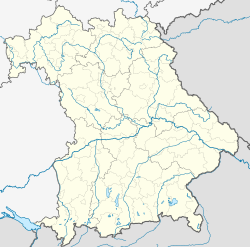You can help expand this article with text translated from the corresponding article in German. (March 2009)Click [show] for important translation instructions.
|
Ringelai | |
|---|---|
 Ringelai | |
Location of Ringelai within Freyung-Grafenau district  | |
| Coordinates: 48°49′N13°29′E / 48.817°N 13.483°E | |
| Country | Germany |
| State | Bavaria |
| Admin. region | Niederbayern |
| District | Freyung-Grafenau |
| Government | |
| • Mayor (2020–26) | Carolin Pecho [1] (SPD) |
| Area | |
• Total | 16.39 km2 (6.33 sq mi) |
| Elevation | 425 m (1,394 ft) |
| Population (2024-12-31) [2] | |
• Total | 1,890 |
| • Density | 120/km2 (300/sq mi) |
| Time zone | UTC+01:00 (CET) |
| • Summer (DST) | UTC+02:00 (CEST) |
| Postal codes | 94160 |
| Dialling codes | 08555 |
| Vehicle registration | FRG |
| Website | www.ringelai.de |
Ringelai is a municipality in the Lower Bavarian district of Freyung-Grafenau, Bavaria, Germany. It is also known as Schmalzdobl and the Meran of the Bavarian Forest .



